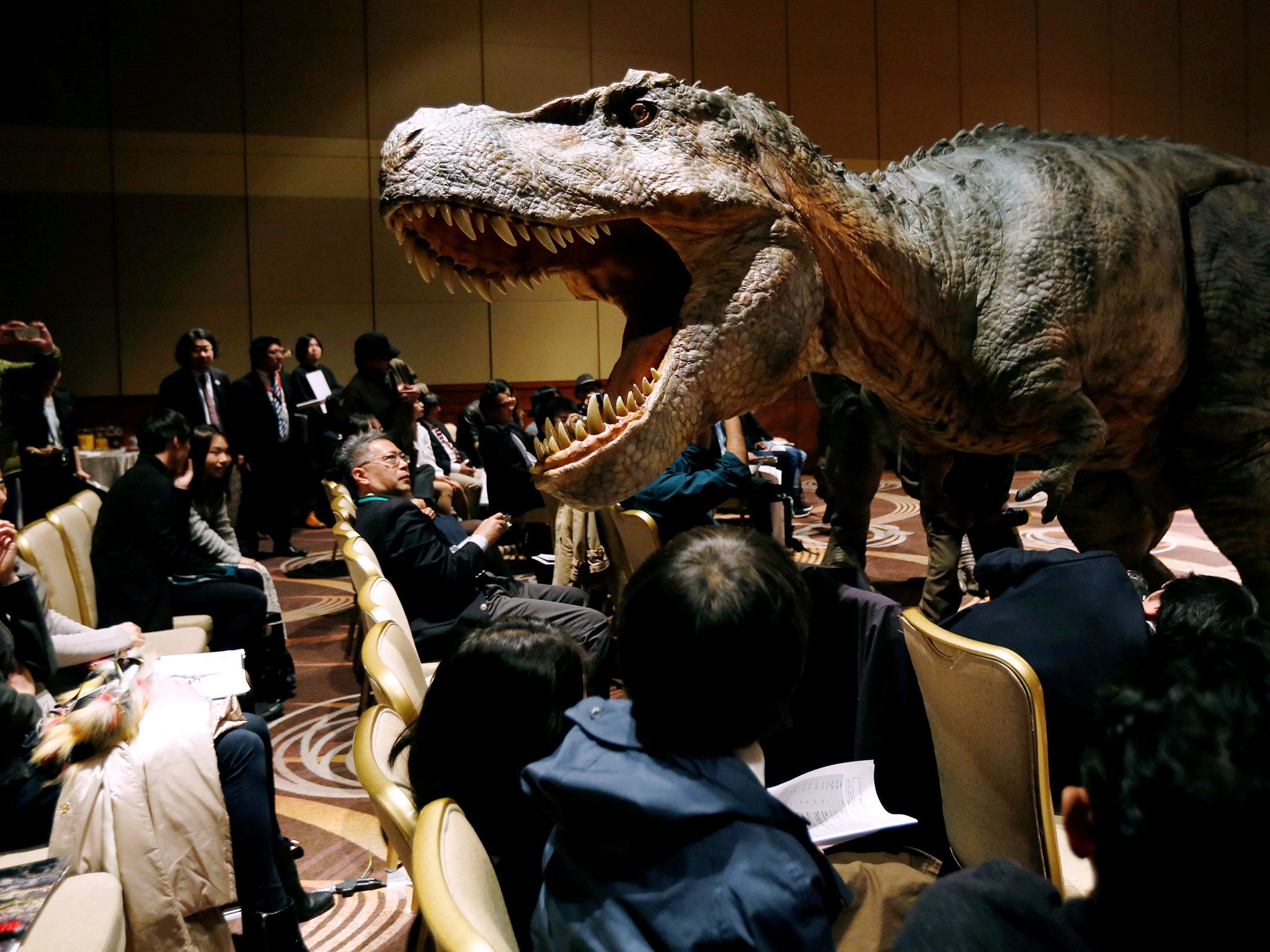Drones add 'dinosaur hunting' to their expanding list of jobs
Unmanned aerial vehicles are helping scientists map prehistoric tracks and build 3D models of them

Your support helps us to tell the story
From reproductive rights to climate change to Big Tech, The Independent is on the ground when the story is developing. Whether it's investigating the financials of Elon Musk's pro-Trump PAC or producing our latest documentary, 'The A Word', which shines a light on the American women fighting for reproductive rights, we know how important it is to parse out the facts from the messaging.
At such a critical moment in US history, we need reporters on the ground. Your donation allows us to keep sending journalists to speak to both sides of the story.
The Independent is trusted by Americans across the entire political spectrum. And unlike many other quality news outlets, we choose not to lock Americans out of our reporting and analysis with paywalls. We believe quality journalism should be available to everyone, paid for by those who can afford it.
Your support makes all the difference.Drones are changing the ways in which scientists’ investigate the footprints left behind by dinosaurs.
Researchers in Australia have started using unmanned aerial vehicles (UAVs) to map prehistoric tracks in remote locations and are using the data to build 3D models of track sites.
They’re also using lidar, a laser scanning technology, and light aircraft to aid their research, which is detailed in a paper published at PeerJ.
“Given the limited number of flat and dry surfaces, the DJI INSPIRE 1 UAV had operational advantages over traditional ichnological mapping techniques,” reads the paper.
“As a quadcopter, it is able to perform vertical takeoff and landings within a relatively small area… a capability that proved invaluable at Minyirr with its limited number of flat and dry surfaces.”
The researchers would typically preserve tracks by photographing them and spending a significant amount of time drawing outlines of footprints by hand.
“During flight, operators can be distant (tens to hundreds of meters) from the surfaces being photographed,” it continues.
“This makes it possible to conduct broad sweeps of tracksites from a safe location, even if the site is located close to water or on a partially submerged offshore reef.”
The researchers also say that drones help them build up a clearer picture of the animals that left the tracks behind.
“You may think it's the track of a dinosaur, but after you do some 3D modelling, you'll be able to confirm what kind of dinosaur it was, if it was moving in a particular manner, or whether or not it's a dinosaur track at all,” Anthony Romilio, one of the paper’s authors and a researcher at the School of Biological Sciences at the University of Queensland, told Mashable.
“We can get a good idea of the size of the animals, if they travelled in herds, their speed. We can build up a more detailed picture of their actual behaviour.”
Mr Romilio has collected data from over 70 track sites so far, and plans to analyse the information further to see what more it can reveal about the animals.
Join our commenting forum
Join thought-provoking conversations, follow other Independent readers and see their replies
Comments